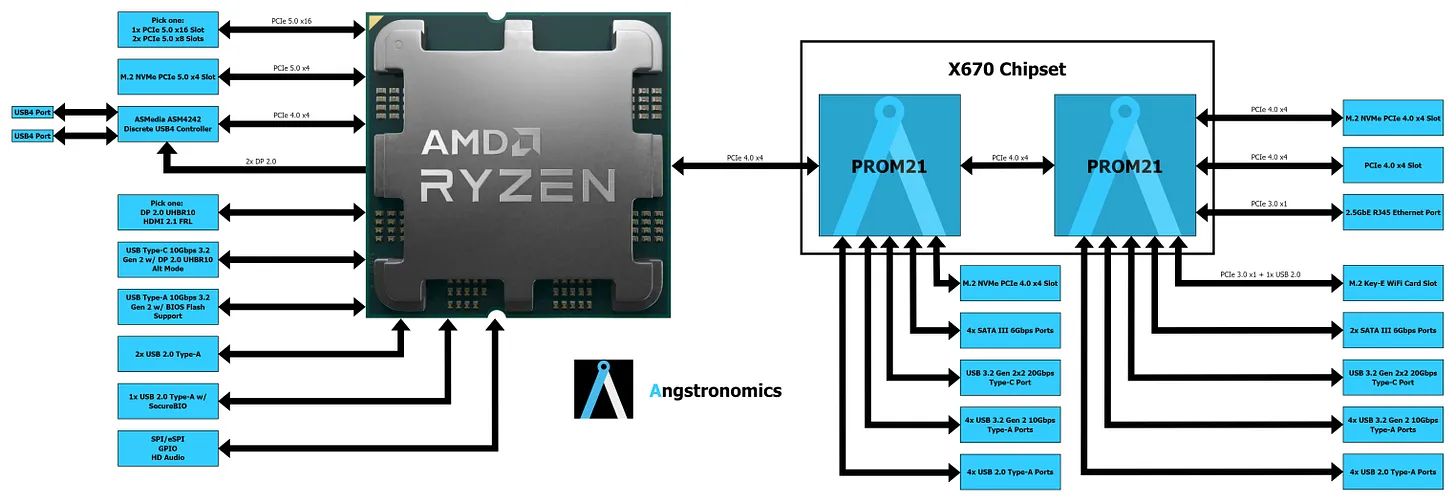FWIW, on the MSI Pro A X670 vs Z690 from MSI's site, it looks like the Z690 wins or at least is on par on connectivity (for that board).
The differences boil down to this :
The Z690 has an X16 PCIE 5.0 slot, the X670 doesn't.
The X670's single CPU Connected m.2 slot is PCIe 5.0, while the Z690s is PCIe 4.0
They both have 3 additional PCIe 4.0 m.2 slots via the chipset, however Intel has twice the throughput to the chipset itself through its DMI 4.0 x8 link vs AMDs PCIe 4.0 x4 link.
This is the X670 version:
3x PCI-E x16 slot
Supports x16/x4/x2
1x PCI-E x1 slot
PCI_E1 PCIe 4.0 supports up to x16 (
From CPU)
PCI_E2 PCIe 3.0 supports up to x1 (From Chipset)
PCI_E3 PCIe 4.0 supports up to x4 (From CPU)
PCI_E4 PCIe 4.0 supports up to x2 (From Chipset)
4x M.2 slot
M.2_1 (From CPU) supports up to PCIe 5.0 x4 , supports 22110/2280 devices
M.2_2 (From Chipset) supports up to PCIe 4.0 x4 , supports 2280/2260 devices
M.2_3 (From Chipset) supports up to PCIe 4.0 x4 , supports 2280/2260 devices
M.2_4 (From Chipset) supports up to PCIe 4.0 x4 , supports 2280/2260 devices
6x SATA 6G port
This is the Z690 version:
- 3x PCIe x16 slots
- PCI_E1 (from CPU)
- Supports up to PCIe 5.0 x16
- PCI_E3 & PCI_E4 (from Z690 chipset)
- Supports up to PCIe 3.0 x4 & 3.0 x1
- 1x PCIe 3.0 x1 slot (from Z690 chipset)
- 6x SATA 6Gb/s ports (from Z690 chipset)
- 4x M.2 slots (Key M)
- M2_1 slot (from CPU)
- Supports PCIe 4.0 x4
- Supports 2242/ 2260/ 2280/ 22110 storage devices
- M2_2 slot (from Z690 chipset)
- Supports PCIe 4.0 x4
- Supports 2242/ 2260/ 2280 storage devices
- M2_3 slot (from Z690 chipset)
- Supports PCIe 3.0 x4
- Supports SATA 6Gb/s
- Supports 2242/ 2260/ 2280 storage devices
- M2_4 slot (from Z690 chipset)
- Supports PCIe 4.0 x4
- Supports SATA 6Gb/s
- Supports 2242/ 2260/ 2280 storage devices
- Intel® Optane™ Memory Ready for M.2 slots that are from Z690 Chipset
- Support Intel® Smart Response Technology for Intel Core™ processors




